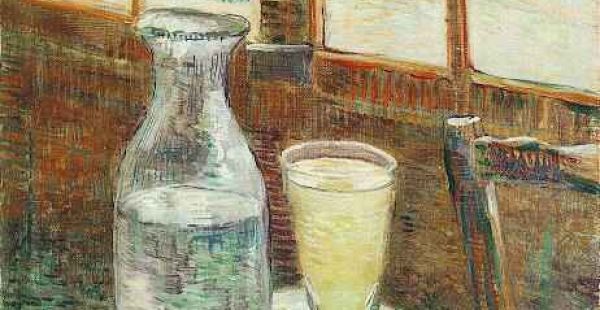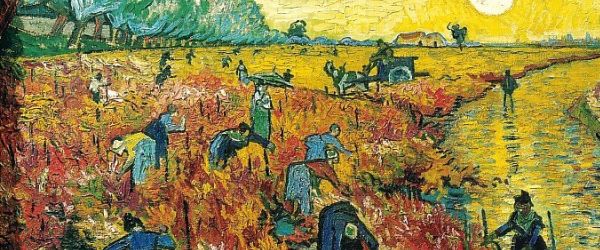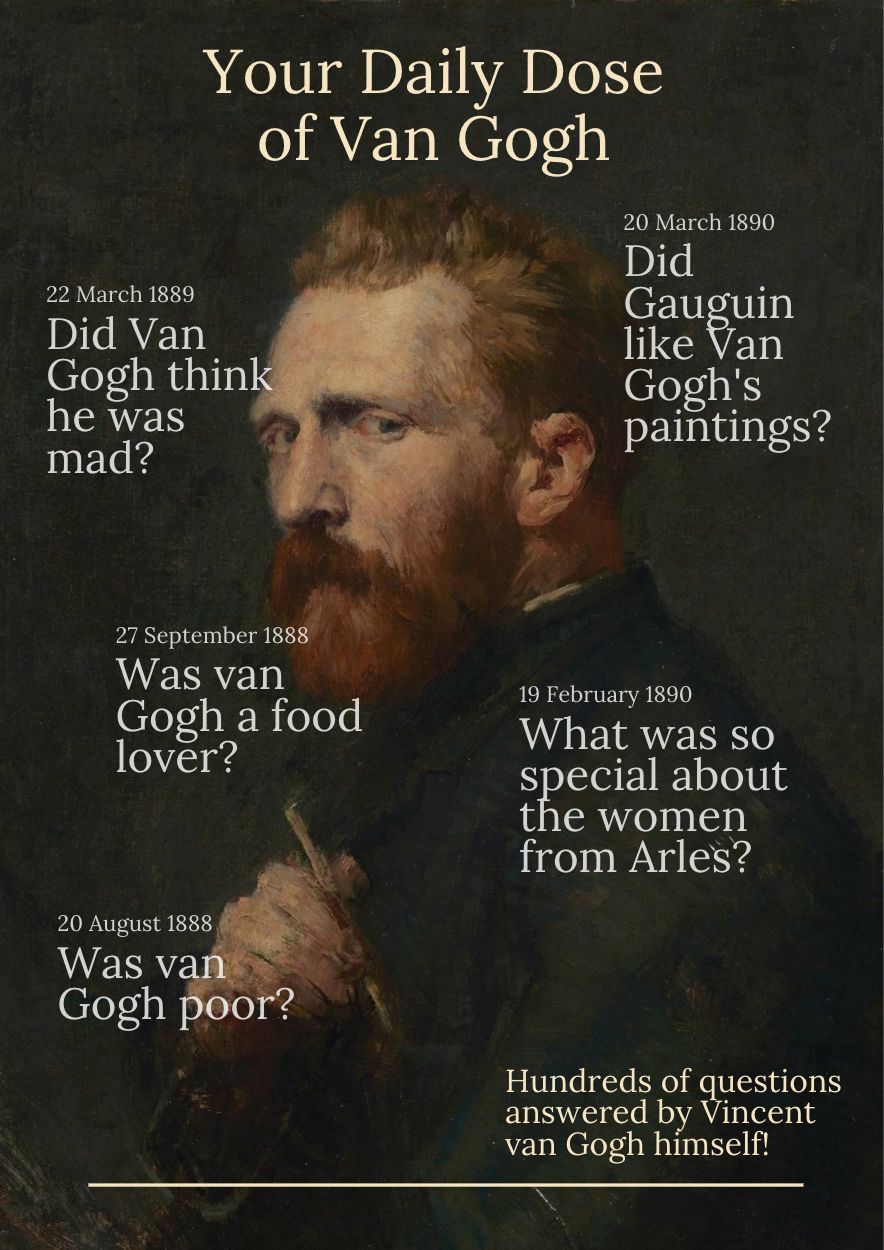-
Van Gogh, wine and absinthe

Van Gogh was partial to drink. And would often find himself in night cafes, or brothels - after he had finished a hard days work in the fields - where alcohol was readily available. He drank wine often, but his favourite drink was the potent spirit, Absinthe.
Absinthe mythology
Absinthe is a distilled spirit derived from plants, such as wormwood and green anise, and herbs. It became synonymous with stories of hallucinogenic effects on the drinker.As it’s reputation grew it inspired a great deal of art and literature in the 19th and 20th century, and became popular with a number of famous writers, thinkers, and artists, including Ernest Hemingway and Pablo Picasso.
Oscar Wilde and absinthe
Oscar Wilde, himself a regular drinker, described its effects in this way: “After the first glass of absinthe you see things as you wish they were. After the second, you see things as they are not. Finally, you see things as they really are, and that is the most horrible thing in the world.’Absinthe Banned
It was believed thujone, a chemical compound found in the wormwood, was what absinthe can thank for these psychotropic effects, such as, blackouts, fits, hallucinations, and other bizarre behaviour.Conversely there has never been any scientific evidence that the small traces of the chemical cause this behaviour but that has not stopped absinthe being banned for long periods of time.
One of the reasons it was initially banned was stories such as Van Gogh’s struggle with mental illness and ultimately taking his own life. Artists and citizens pushed to some extreme through their use of the drink.
These stories though were often exaggerated by people and organisations benefiting from wine sales, such as winemakers themselves, ensuring absinthe, a very popular and cheap drink at the time was prohibited.
These sanctions have now been lifted in most countries though there are strict restrictions on the strength of its alcohol content.

While living in Arles he also spent time in the vineyards, watching the labourers work long hours picking grapes, and working in the fields. The Red Vineyard is Van Gogh’s famous depiction of a days work coming to an end, before nightfall and before the workers would head to the night cafes and bars, the sun hanging low in the sky and everything bathed in the orange and red light.
Find out in your FREE Van Gogh e-book.
Hundreds of questions answered by Van Gogh himself!
These stories though were often exaggerated by people and organisations benefiting from wine sales, such as winemakers themselves, ensuring absinthe, a very popular and cheap drink at the time was prohibited.
These sanctions have now been lifted in most countries though there are strict restrictions on the strength of its alcohol content.

Van Gogh in the vineyards
Van Gogh also drank wine and would often also drink to excess. Cheap wine suited his budget and was readily available.While living in Arles he also spent time in the vineyards, watching the labourers work long hours picking grapes, and working in the fields. The Red Vineyard is Van Gogh’s famous depiction of a days work coming to an end, before nightfall and before the workers would head to the night cafes and bars, the sun hanging low in the sky and everything bathed in the orange and red light.
Your Daily Dose of Van Gogh
What did Vincent van Gogh write on this day?Find out in your FREE Van Gogh e-book.
Hundreds of questions answered by Van Gogh himself!
Comments (0)
No comments found.
